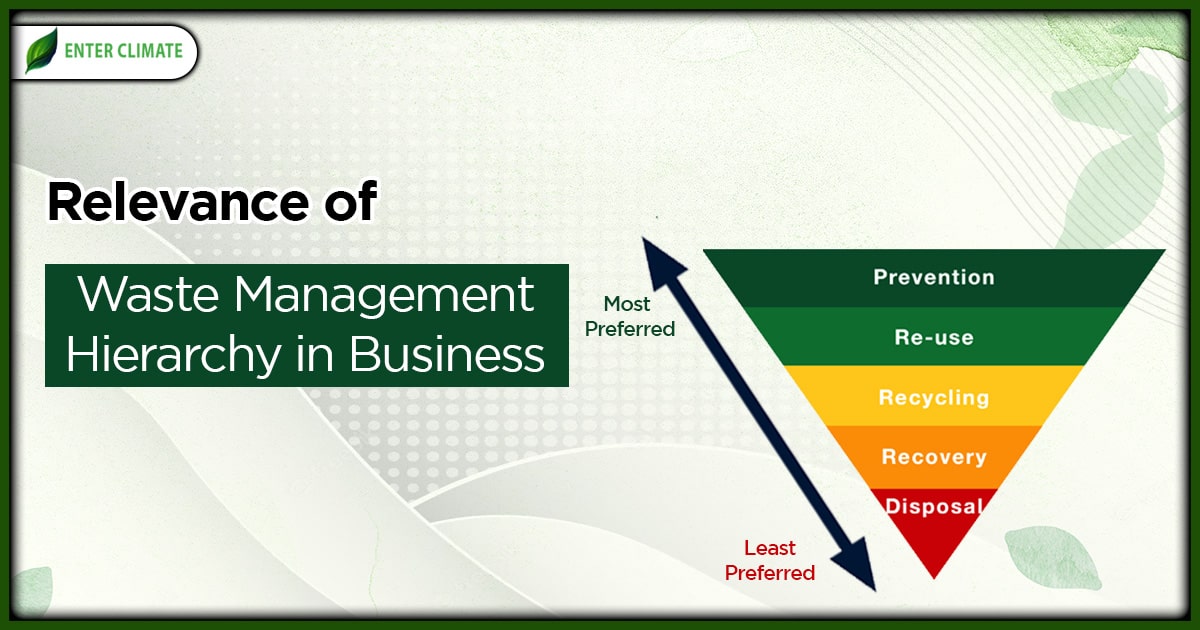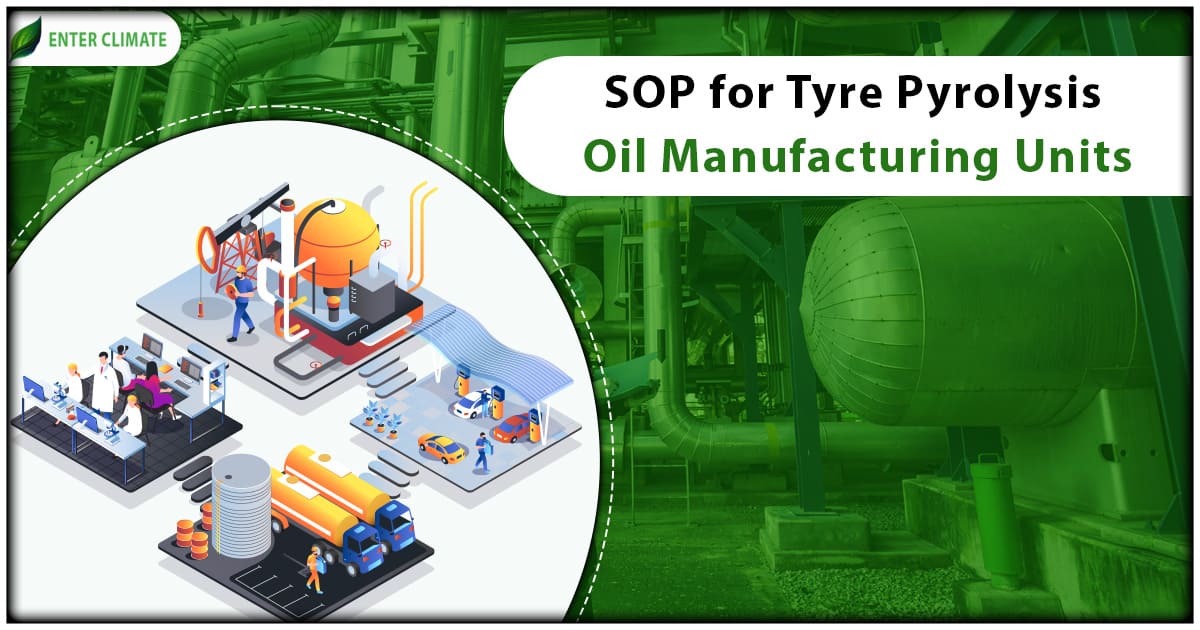Overview of Hazardous Waste Management Rules in India
 28 Jul, 2022
28 Jul, 2022 
The Hazardous Waste Management Rules (HWM Rules) of 2016 gives the provisions to ensure the prevention, recycling and safe disposal of hazardous waste in India. HWM rules have been updated from time to time to lay down guidelines for handling, generation, processing, treatment, package, storage, transportation, use reprocessing, collection, conversion, destruction and disposal of hazardous waste. Hazardous waste is defined as any form of waste, excluding domestic and radioactive wastes, which because of its corrosive, reactive, ignitable, toxic and infectious characteristics, causes or has the potential to cause harm to human health or the environment. Waste is considered hazardous if it exhibits one or more of the following characteristics.
- Explosive (H1)
- Flammable liquids (H3)
- Flammable solids(H 4.1)
- Substances or wastes liable to spontaneous combustion (H 4.2)
- Wastes which emit flammable gases if coming in contact with water (H 4.3)
- Oxidizing (H 5.1)
- Organic Peroxides (H 5.2)
- Poisons (H 6.1)
- Infectious substances (H 6.2)
- Corrosives (H 8)
- Liberation of toxic gases when coming in contact with air or water (H 10)
- Toxic (H 11)
- Eco-toxic (H 12) and
- Capable of being Hazardous (H 14)
Hazardous Waste Management Rules in India
India produces approximately 74.6 lakh tonnes of hazardous waste annually, with around 44,000 industries. With rapid industrial development in India in the past decade, many pharmaceuticals, chemical, petrochemical, textiles, pesticides, paper, and fertiliser industries have emerged. While there are adequate laws to regulate the management of hazardous waste from such industries, there are cases when, due to a lack of proper treatment, storage and disposal facilities, these units discard their waste into the environment (mainly air and water) without proper treatment.
Development Hazardous Waste Management Rule in India
The forty-second amendment to the Indian Constitution directed the state to protect and improve the environment to safeguard public health, forests, and wildlife. Under Article 47 of the Constitution[1], states must protect the environment and take measures to control pollution under the DPSP. A brief evolution of the present form of Hazardous Waste Management Rules has been given below.
- The Environment (Protection) Act of 1986 is an umbrella legislation to protect and improve the environment and regulate the management and handling of hazardous substances and chemicals in the country. Major international conventions like the Basel Convention, the Rotterdam Convention, the Stockholm Convention, SAICM and the Minamata Convention contributed to the development of regulatory frameworks in the management and disposal of hazardous waste in India in the initial years.
- India brought in national legislation to deal with hazardous wastes in the form of Hazardous Waste (Management & Handling) Rules, 1989 under the Environment (Protection) Act, 1986. Important amendments to the Hazardous Waste Management Rules, 1989 came in 2000, 2003 and in 2008, The Hazardous Waste (Management, Handling and Transboundary Movement) Rules, 2008, came into effect.
- In 2016, the Hazardous and Other Wastes (Management and Transboundary Movement) Rules, 2016, were notified by the MoEF&CC in supersession of the 2008 Rules. The 2016 rules applied to hazardous waste but also included other waste (listed in Part B and D of Schedule III), which was missing in the 2008 format. The 2016 rules do not cover specific waste like waste-water and exhaust gases, radioactive wastes, biomedical waste, etc., which are covered through separate legislations.
Salient Features of HWM Rules, 2016
The Hazardous Waste Management Rules lay down the responsibilities of the hazardous waste generator (occupier) regarding pollution prevention and waste minimization through reuse, recycling and recovery. The Responsibilities of Hazardous Waste handlers and treatment facilities (operators) have also been defined. Salient features of the Hazardous Waste Management Rules 2016 are as follows.
- Authorisation Requirement for managing hazardous Waste: Every occupier of the facility which is engaged in the generation, handling (collection, storage, transportation) and processing (treatment, recycling, disposal etc.) of the hazardous waste is required to make to the State Pollution Control Board (SPCB) to obtain authorisation for their activity.
- Guidelines forTSDFs and SPCBs: The rules make it mandatory for TSDFs to store, transport, and dispose of hazardous waste as per the guidelines issued by the CPCB and direct the respective SPCB to identify locations for the construction of hazardous waste treatment facilities in their state. SPCBs are now responsible for allocating lands for the construction of hazardous waste and ensuring proper registration, skill development and monitoring to check the generation and recycling of hazardous waste.
- Hazardous Waste Identification: The handbook on Hazardous Waste Management Rules, 2016 released by CPCB specifies the criteria for the identification of hazardous waste. It can be made through “Process Knowledge”, where the information about raw material and process generating the waste is analysed. An occupier (i.e. waste generator) can choose to rely on professional expertise to determine whether the waste is hazardous or by sending the waste to a certified laboratory for testing and analysis.
- Storage and Labelling Requirements: The facilities generating hazardous and other wastes can store the waste for a certain period and quantity with exceptions for which SPCB is the deciding authority. The facility must also mark the hazardous waste containers with labels (as specified in Form 8 of the Rules) with fluorescent yellow colour background and ‘HAZARDOUS WASTES’ and ‘HANDLE WITH CARE’ written in red colour in Hindi, English and vernacular language.
- Accumulation and Storage Area: As per the Hazardous Waste Management Rules, 2016, the occupier and operator must ensure certain safety measures in the area where the hazardous waste is being stored. The access must be locked and restricted from unauthorised entry. Spill Control, firefighting and internal communication equipment must be regularly tested. Also, weekly inspections must be conducted in such areas.
- Transboundary movement (Import and Export) of Hazardous Waste: Though hazardous waste is banned from import in India for disposal, however, it is allowed for recycling, reuse, recovery and co-processing purposes. The Hazardous Waste Management Rules define the procedure for import and export along with the responsibilities of the importer and exporter and also give a list of Hazardous and Other wastes prohibited for import
- Record Keeping: The waste generator and TSDF operator must maintain the records of weekly inspection, transportation manifests, waste analysis tests, and training conducted in their facilities.
- Co-processing and Energy Recovery: Use of hazardous wastes in co- processing in industries like cement manufacturing and energy and material recovery at the time of its disposal have also been focussed in the Hazardous Waste Management Rules, 2016.
- Hazardous Characteristics: Part C of the Rules defines the hazardous characteristics of the waste and categorises them into codes like H1, H3 and so on to avoid any difficulty in their identification.
- Duties of Authorities: A list of every authority engaged in Hazardous waste management and their corresponding duties have been given in the HWM Rules, 2016.
Amendments to the HWM Rules, 2016
Subsequent amendments in 2017, 2018, 2019 and 2021to the Hazardous Waste Management Rules, 2016, were done. Some of the important changes brought through these amendments are as follow.
- Solid plastic waste was prohibited from being imported into the country, including in Special Economic Zones (SEZ) and Export Oriented Units (EOU).
- Exporters of silk waste were given exemption from requiring permission from the MoEF&CC.
- Electrical and electronic components that are produced and exported from India, if found defective, were allowed to be imported back within a year of export without obtaining permission from MoEF&CC
- Exemption from requiring authorisation under the Hazardous Waste Management Rules, 2016, provided to those industries that did not need consent under Air and Water Act. Such industries, however, were required to hand over their waste to the actual authorised users, waste collectors or disposal facilities.
Conclusion
Ineffective hazardous waste management is a significant problem in India, especially in urban centres. According to some research, approximately 46% of the hazardous waste is landfilled, 9% is incinerated, and 45% is recycled. As urbanisation increases, waste management problems in megacities are also rising. The economic development in recent decades has resulted in a significant increase in the generation of hazardous waste in the country. ASSOCHAM and PwC showed that hazardous wastes are mounting at a rate of 2 to 5 per cent per year. Another study estimates that by 2050, about 50% of India’s population will live in urban areas, and waste generation will grow by 5% per year. An increase in the number of TSDFs which adhere to the hazardous waste management rules is the need of the hour.
Read our Article: Basel Convention on Hazardous Waste and its Applicability in India: an Overview













